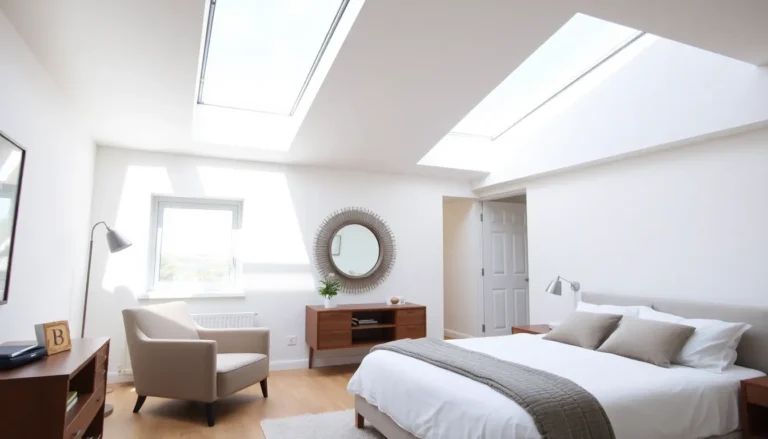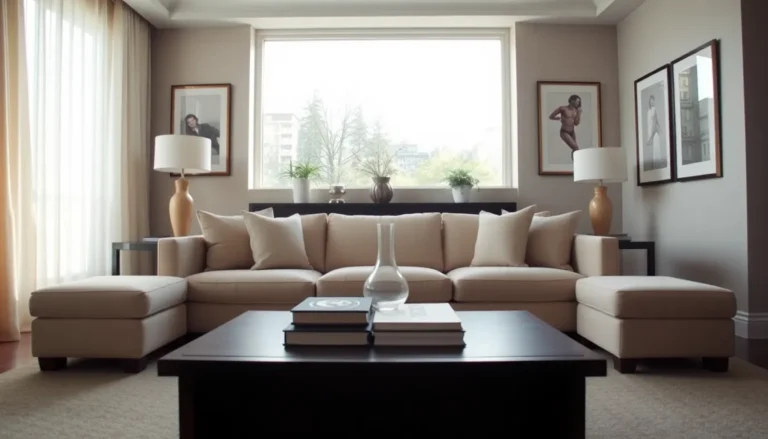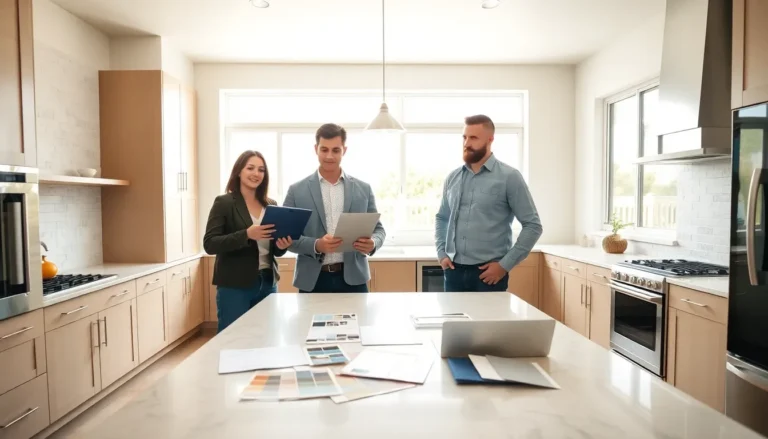Home is where the heart is, but what happens when that heart needs a little TLC? Enter the home improvement loan, your trusty sidekick in transforming drab into fab. Whether it’s fixing that leaky roof or finally building the kitchen of their dreams, these loans make renovations not just possible but downright exciting.
Table of Contents
ToggleUnderstanding Home Improvement Loans
Home improvement loans serve as a financial solution for homeowners who wish to upgrade or repair their properties. These loans can cover projects ranging from essential repairs to luxurious renovations, enabling homeowners to enhance their living environments.
Definition of Home Improvement Loans
Home improvement loans provide funds specifically for renovating, remodeling, or repairing a home. They are often unsecured loans, meaning borrowers do not need to use their property as collateral. These loans allow homeowners to finance improvements, which can enhance property value and comfort without depleting savings.
Types of Home Improvement Loans
Homeowners have several options when choosing home improvement loans.
- Personal Loans: Unsecured, these loans offer flexibility in usage and often come with fixed interest rates.
- Home Equity Loans: Secured by the home’s equity, these loans provide larger amounts at lower interest rates.
- Home Equity Lines of Credit (HELOC): Similar to home equity loans, HELOCs operate as revolving credit, allowing withdrawals as needed.
- FHA 203(k) Loans: Government-backed loans are designed for financing renovations alongside a home purchase.
Selecting the right type of loan depends on individual financial situations and renovation plans.
Eligibility Requirements
Home improvement loans come with specific eligibility criteria that homeowners must meet to secure funding. Understanding these requirements ensures a smoother application process.
Credit Score Considerations
Credit scores play a vital role in the approval of home improvement loans. Lenders often look for scores above 620 for favorable terms. Higher scores generally lead to lower interest rates, making borrowing more economical. A score below this threshold may limit options or result in higher costs. Checking one’s credit report prior to applying allows for corrections of any errors. Maintaining a good credit history not only improves chances of approval but also influences the loan amount available.
Income and Employment Factors
Stable income and employment history are critical for obtaining home improvement loans. Lenders typically assess debt-to-income ratios to ensure borrowers can manage new debt responsibly. A common ratio limit is 43%, but some lenders may allow higher ratios depending on other factors. Documenting employment stability, typically two years in the same job or industry, strengthens applications. Consistent income from various sources may also support the application. Overall financial stability increases both the likelihood of approval and access to better loan terms.
Application Process
The application process for a home improvement loan involves several key steps. Understanding these steps helps homeowners navigate their options effectively.
Step-by-Step Guide to Applying
- Assess the project budget and determine the loan amount needed.
- Research various lenders and compare loan products available in the market.
- Check personal credit scores and address any discrepancies.
- Submit pre-approval applications to multiple lenders for better offers.
- Select the lender offering the most favorable terms and complete the application.
Following these steps improves the chances of obtaining a loan with advantageous rates.
Documentation Needed
Lenders require specific documents to process the loan application. Applicants must prepare the following essential papers:
- Proof of identity, such as a driver’s license or passport.
- Recent pay stubs and tax returns to demonstrate income.
- Employment verification letter to show job stability.
- Credit report showing credit history and scores.
- Estimates for the proposed home improvement projects.
Having these documents ready streamlines the application process, supporting successful approval outcomes.
Loan Terms and Conditions
Home improvement loans come with specific terms and conditions that vary based on several factors.
Interest Rates and Fees
Interest rates for home improvement loans typically range from 5% to 36%. Rates often depend on the borrower’s credit score and the loan type. Lenders frequently offer fixed or variable rates, with fixed rates providing stability over time. Additionally, fees such as origination fees and closing costs can impact the overall loan cost. Borrowers should carefully review the loan agreement to understand all applicable fees before committing. Comparing different lenders can help identify the most favorable rates and fee structures for homeowners.
Repayment Terms
Repayment terms for home improvement loans generally span from three to ten years. Borrowers can expect monthly payments that include both principal repayment and interest. Some loans allow extra payments without penalties, enabling early repayment. Others may incorporate deferred payments during certain periods, but interest continues to accrue. Assessing the monthly budget against repayment terms is crucial for managing finances effectively. Homeowners should choose a repayment plan that aligns with their financial situation to avoid hardship.
Benefits of Home Improvement Loans
Home improvement loans offer multiple advantages for homeowners seeking to elevate their properties. Understanding these benefits aids in making informed financial decisions.
Increased Property Value
Home improvement loans lead to increased property values after renovations. Modifying kitchens, bathrooms, or landscaping can significantly enhance appeal. Research shows that a kitchen remodel can yield a 70% to 80% return on investment. Upgrading energy-efficient windows often improves marketability as well. Additionally, enhancing curb appeal boosts first impressions, attracting potential buyers. Investing in these improvements ensures long-term property value growth, creating a favorable financial return when homeowners choose to sell their homes.
Enhanced Living Space
Home improvement loans create more functional living spaces tailored to individual needs. Updating an outdated bathroom or opening a floor plan can enhance daily comfort. Expanding usable areas increases room for gatherings and family activities. A recent survey found that 85% of homeowners feel happier in homes after renovations. Personalizing spaces, such as creating a home office or a cozy outdoor area, improves overall satisfaction. Homeowners can turn renovations into places that reflect their lifestyles, making everyday life more enjoyable and fulfilling.
Home improvement loans offer homeowners an effective way to finance renovations and repairs. By understanding the different types of loans available and their eligibility requirements, individuals can make informed decisions that align with their financial goals.
These loans not only enhance living spaces but also contribute to increased property values and personal satisfaction. With careful planning and a clear budget, homeowners can transform their residences into dream homes while ensuring they manage their finances responsibly.
Taking the time to research and choose the right loan can lead to successful home improvements that provide lasting benefits.





